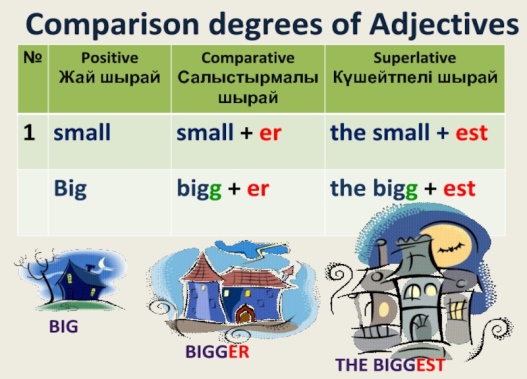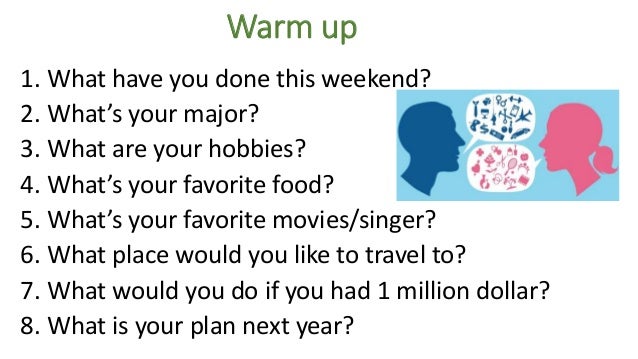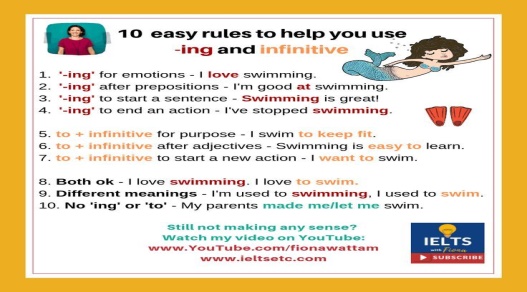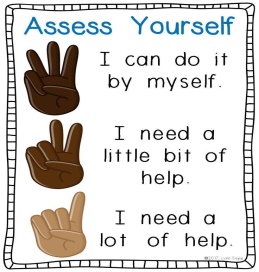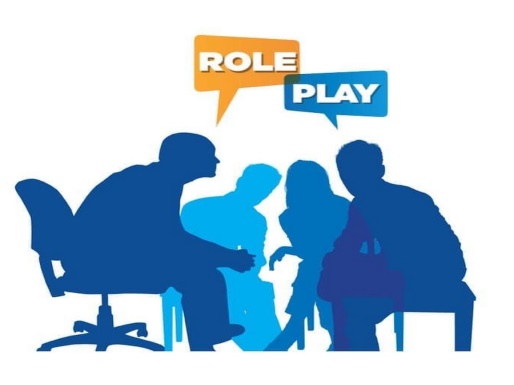Назар аударыңыз. Бұл материалды сайт қолданушысы жариялаған. Егер материал сіздің авторлық құқығыңызды бұзса, осында жазыңыз. Біз ең жылдам уақытта материалды сайттан өшіреміз
Жақын арада сайт әкімшілігі сізбен хабарласады

Бонусты жинап картаңызға (kaspi Gold, Halyk bank) шығарып аласыз


2 Term Lesson plan Solution 11
Дипломдар мен сертификаттарды алып үлгеріңіз!


Материалдың толық нұсқасын
жүктеп алып көруге болады
Short term plan
|
Unit: 3 Human brain |
Lesson 25 |
||
|
Teacher’s name: |
|
||
|
Date: |
|
||
|
Grade: 11 |
Number present: |
absent: |
|
|
Lesson title |
The human brain |
||
|
Learning objectives |
11.2.4.1 - implied meaning in unsupported extended talk on a wide range of general and curricular topics, including talk on a growing range of unfamiliar topics 11.3.2.1 - ask and respond with appropriate syntax and vocabulary to open-ended higher-order thinking questions on a range of general and curricular topics, including some unfamiliar topics |
||
|
Lesson objectives |
Learners will be able to: apply topic related vocabulary with support. discuss topic questions in simple sentences |
||
|
Value links |
Family – Family values are moral and ethical principles of typical family life, including sacrificing for loved ones, putting your loved ones first, and keeping your loved ones at the centre of your thoughts and actions. |
||
|
Plan |
|||
|
Stages / Time |
Teachers actions |
Students actions |
Assessment criteria |
Resources |
|
Beginning of the lesson Warming-up
3 min. Pre-learning «Brainstorming» method 7 min. |
Organization moment : 1.Greeting. Ask about the weather. The teacher sets the lesson objectives, letting students know what to anticipate from the lesson. Warming up Where are you from? How old are you? What color is it? How many students are there in class? What day of the week today? Lead – In
|
The aim: To develop pupils speaking skills and create friendly atmosphere Efficiency: By wishing each other they feel better and feel the support of others Students of the class are listed. Students' attention is drawn to the lesson. Students say different words from the icture •Learners remember previous lesson vocabulary •Learners answer the questions |
The teacher to assess learners for their ability. “Good job! Well done!” Formative Assessment
Good job! Descriptor: - remembers the lesson passed Point 1 Assessment criteria make basic statements related to communication style |
Pictures worksheet Picture |
|
Middle of the lesson Presentation part. 30 min |
Ex:1 P:24 •Ask students to discuss the questions in pairs. Elicit students’ answers. Ex: 2 P: 24 • Focus on the brain diagrams and the words provided. Check meaning and pronunciation. Check answers as a class. Ex: 3 P: 24 Tell students they are going to listen to a lecture and then complete the diagram. Check answers as a class. Ex: 4 P: 24 Focus attention on the photos. In pairs, students describe the brain functions in different situations. Conclusion during the lesson some tasks differentiated by outcomes of the students and by their abilities. |
• Learners work in pairs. Answer the questions. ANSWERS Students own answer • Learners look at the brain diagrams and check the meaning of the functions of the brain below ANSWERS Students own answer • Learners listen to part of a lecture about the human brain and complete the diagrams with the names of the functions ANSWERS A Left hemisphere: speech, logic; Right hemisphere: creativity B Frontal lobe: decision making, planning, problem solving, speech, self-awareness, movement; Parietal lobe: sensation; Temporal lobe: memory, language; Occipital lobe: vision • Learners work in pairs. Look at the photos and describe the brain functions that we use in the different situations. ANSWERS Students own answer |
Descriptor: - work in pairs. Answer the questions Total: 3 point
Self assessment Differentiation: «Verbal support» method is used to help Ss use new words in the sentences. Descriptor: - listen to part of a lecture about the human brain Total: 3 point Descriptor: - work in pairs. Look at the photos and describe the brain functions that we use in the different situations Total: 3 point -Make CCQ questions Yes / No |
Card Worksheet Students book |
|
End of the lesson 5 min |
FEEDBACK Learners provide feedback on what they have learned at the lesson. Ex: P: Home task: Write the days |
|
Poster Success
|
|
Short term plan
|
Unit 3 Human brain |
Lesson 26 |
||
|
Teacher’s name: |
|
||
|
Date: |
|
||
|
Grade: 11 |
Number present: |
absent: |
|
|
Lesson title |
Brain human |
||
|
Learning objectives |
11.3.2.1 - ask and respond with appropriate syntax and vocabulary to open-ended higher-order thinking questions on a range of general and curricular topics, including some unfamiliar topics 11.3.7.1 - use appropriate subject-specific vocabulary and syntax to talk about a range of familiar and some unfamiliar general and curricular topics 11.4.8.1 - select and evaluate paper and digital reference resources to check meaning and extend understanding |
||
|
Lesson objectives |
Learners will be able to: use present continuous in the context properly with support. apply topic related vocabulary with support |
||
|
Value links |
Loyalty – Loyalty might be a core personal value to you if you highly prize friends that are reliable and trustworthy. You might put your friends or chosen family first, always being there for them when they need you. |
||
|
Plan |
|||
|
Stages / Time |
Teachers actions |
Students actions |
Assessment criteria |
Resources |
|
Beginning of the lesson Warming-up
3 min Pre-learning «Brainstorming» method 7 min. |
Organization moment : 1.Greeting. Ask about the weather. The teacher sets the lesson objectives, letting students know what to anticipate from the lesson.
Warming up Where are you from? How old are you? What color is it? How many students are there in class? What day of the week today? Ask a few pupils to stand up and stand in a row. Ask the rest of the class questions to revise the ordinals. |
The aim: To develop pupils speaking skills and create friendly atmosphere Efficiency: By wishing each other they feel better and feel the support of others Students of the class are listed. Students' attention is drawn to the lesson. Determines the topic and purpose of the lesson •Learners remember previous lesson vocabulary Students say different words from the picture Answer the question. |
The teacher to assess learners for their ability. “Good job! Well done!” Formative Assessment
Good job! Descriptor: - know daily routines vocabulary Assessment criteria - Learners have met the learning objectives if they can talk about brain technology |
Pictures worksheet |
|
Middle of the lesson Presentation part. 30 min |
Ex:8 P:25 • Go through the Recycle! box and the sentences together. Students identify what questions are referring to Ex: 9 P: 25 • Students decide if the adjectives have a positive or negative meaning, or both. Check answers as a class. Ex: 10 P: 25 • Students read the situations and choose one or two appropriate adjectives from exercise 9. Check answers as a class Ex: 11 P: 25 In pairs, students ask and answer the questions. Monitor and check pronunciation and grammar. Ask a few pairs to share their ideas with the class. |
• Pupils read the Recycle! box and the sentences below. Say whether the sentences from the lecture refer to what is happening now, a future arrangement, or an annoying habit ANSWERS 1 happening now 2 annoying habit 3 future arrangement • Pupils check the meaning of the emotions below. Which are positive emotions and which are negative? ANSWERS Positive: amusement, contentment, thrill Negative: anger, anxiety, envy, frustration, misery, stress, shame • Pupils choose one or two from exercise 9 for each situation. ANSWERS 1 anxiety, stress 2 anger, frustration, stress 3 envy 4 thrill 5 anger, anxiety, stress, shame 6 envy, misery 7 contentment, thrill \ 8 anger, frustration, stress • Pupils work in pairs. Answer the questions ANSWERS Students own answer |
Descriptor: - read the Recycle! -answer the question Total: 2 point Descriptor: - check the meaning of the emotions Total: 1 point Descriptor: - choose one or two each situation Total: 2 point Self assessment
-Make CCQ questions Yes / No Total: 10 point |
Card Worksheet Students book |
|
End of the lesson 5 min |
FEEDBACK Learners provide feedback on what they have learned at the lesson. Ex: P: Home task: Write the days |
|
Poster Success
|
|
Short term plan
|
Unit 3 Human brain |
Lesson 27 |
||
|
Teacher’s name: |
|
||
|
Date: |
|
||
|
Grade: 11 |
Number present: |
absent: |
|
|
Lesson title |
Comparison |
||
|
Learning objectives |
11.3.6.1 - navigate talk and modify language through paraphrase and correction in talk on a wide range of familiar and some unfamiliar general and curricular topics 11.6.3.1 - use a variety of adjectives complemented by that, infinitive and wh clauses on a wide range of general and curricular topics |
||
|
Lesson objectives |
Learners will be able to: produce accurate comparative structures with support. discuss topic questions in simple sentences. |
||
|
Value links |
Fairness – If you value fairness, you might be highly sensitive to situations at school or in the workplace where a teacher or a peer has exhibited favoritism or allowed someone to get away with living by a different set of rules to everyone else. |
||
|
Plan |
|||
|
Stages / Time |
Teachers actions |
Students actions |
Assessment criteria |
Resources |
|
Beginning of the lesson Warming-up
3 min Pre-learning «Brainstorming» method 7 min. |
Organization moment : 1.Greeting. Ask about the weather. The teacher sets the lesson objectives, letting students know what to anticipate from the lesson. Warming up Where are you from? How old are you? What color is it? How many students are there in class? What day of the week today? revise the vocabulary from the previous Lead – In
|
. The aim: To develop pupils speaking skills and create friendly atmosphere Efficiency: By wishing each other they feel better and feel the support of others Students of the class are listed. Students' attention is drawn to the lesson. • Learners remember previous lesson vocabulary Determines the topic and purpose of the lesson Students say different words from the picture |
The teacher to assess learners for their ability. “Good job! Well done!” Formative Assessment
Good job! Descriptor: - can tell the time Point 1 Assessment criteria - Learners have met the learning objectives if they can talk about |
Pictures worksheet Picture |
|
Middle of the lesson Presentation part. 30 min |
Ex: 1 P: 26 Tell students whether you feel luckier or unluckier than other people and describe the luckiest or unluckiest thing that has ever happened to you. In pairs, students do the same. Ask one or two students to share their stories. Ex: 2 P: 26 • Elicit the rules for forming comparative and superlative adjectives. Ex:3 P: 26 • Ask students to read the text and choose the correct words. Check answers as a class. Ex:4 P: 26 Go through the Learn this! box together. Students find a sentence in the text to match each rule. Check answers as a class. Ex:5 P: 26 Ask students to complete the sentences. Check answers as a class. Ex:6 P: 26 Go through the Look out! box together. Ask students to find three sentences in the text that contain qualifying comparatives. They then complete the facts with the correct word. Check answers as a class. Conclusion during the lesson some tasks differentiated by outcomes of the students and by their abilities. |
• Pupils answer the question. ANSWERS Students own answer •Pupils what are the rules for forming a) short and long comparative adjectives and b) short and long superlative adjectives? ANSWERS Students own answer •Pupils underline the correct words to complete the text ANSWERS 1 poorest 2 than 3 most •Pupils read the Learn this! box. Then find examples of rules in the text in exercise ANSWERS 1 most of his accidents could have ended a lot more seriously 2 And the older he got, the worse things became. 3 John's life has been more accident-filled than you would think possible •Pupils complete the sentences with a comparative, using the words in brackets ANSWERS 1 more dangerous 2 the scarier 3 later, more concerned 4 less optimistic |
Descriptor: - answer the question. Total: 1 point
Descriptor: - underline the correct words to complete the text Total: 1 point
Descriptor: - find examples of rules in the text in exercise Total: 1 point -Make CCQ questions Yes / No pupils are evaluated by collecting pencils |
Card Worksheet |
|
End of the lesson 5 min |
FEEDBACK Learners provide feedback on what they have learned at the lesson. Ex: Home task: |
|
Poster Success
|
|
Short term plan
|
Unit 3 Human brain |
Lesson 28 |
||
|
Teacher’s name: |
|
||
|
Date: |
|
||
|
Grade: 11 |
Number present: |
absent: |
|
|
Lesson title |
Keep calm! |
||
|
Learning objectives |
11.2.1.1 - understand the main points in unsupported extended talk on a wide range of general and curricular topics, including talk on a growing range of unfamiliar topics 11.3.2.1 - ask and respond with appropriate syntax and vocabulary to open-ended higher -order thinking questions on a range of general and curricular topics, including some unfamiliar topics 11.4.8.1 - select and evaluate paper and |
||
|
Lesson objectives |
Learners will be able to: -use context clues to identify specific information --compose convergent and divergent questions at higher order thinking level |
||
|
Value links |
Fairness – If you value fairness, you might be highly sensitive to situations at school or in the workplace where a teacher or a peer has exhibited favoritism or allowed someone to get away with living by a different set of rules to everyone else. |
||
|
Plan |
|||
|
Stages / Time |
Teachers actions |
Students actions |
Assessment criteria |
Resources |
|
Beginning of the lesson Warming-up 3 min Pre-learning «Brainstorming» method 7 min. |
Organization moment : 1.Greeting. Ask about the weather. The teacher sets the lesson objectives, letting students know what to anticipate from the lesson.
revise the vocabulary from the previous Lead – In
|
. The aim: To develop pupils speaking skills and create friendly atmosphere Efficiency: By wishing each other they feel better and feel the support of others Students of the class are listed. Students' attention is drawn to the lesson. • Learners remember previous lesson vocabulary Determines the topic and purpose of the lesson Students say different words from the picture |
The teacher to assess learners for their ability. “Good job! Well done!” Formative Assessment
Good job! Descriptor: - can tell the time Point 1 Assessment criteria - Learners have met the learning objectives if they can talk about |
Pictures worksheet Picture |
|
Middle of the lesson Presentation part. 30 min |
Ex: 1 P: 27 Go through the situations together. In pairs, students discuss how they would react. Remind them to use would to talk about their feelings and actions in unlikely situations. Ask a few students for their reactions Ex: 2 P: 27 Students read the text. Help with any unknown vocabulary. Ask them to decide on the best advice for the situations in exercise 1. Check answers as a class. Then ask students which technique(s) they might use and why Ex:3 P: 27 Go through the Listening Strategy together. Play the recording. Pause after each speaker to give students time to write their answers. Check answers as a class. Ex:4 P: 27 Students write the words that are emphasised. Remind them to give a reason. Conclusion during the lesson some tasks differentiated by outcomes of the students and by their abilities. |
• Pupils work in pairs. Discuss how you would feel and what you would do in these situations. ANSWERS Students own answer •Pupils read the text. Which pieces of advice could be useful to each situation in exercise 1? Why? Which do you think is the best piece of advice? ANSWERS Advice 1 situations 1, 2 and 3; Advice 2 situations 1, 2 and 3; Advice 3 situations 2 and 3 (Possible answers) Advice 1 situations 1, 2 and 3; Advice 2 situations 1, 2 and 3; Advice 3 situations 2 and 3 •Pupils read the text. Answer the question ANSWERS 1 quiet-1; 2 taken-3; 3 cash, card - 2; 4 forgotten, passport - 1; 5 Ted, mine – 3 •Pupils look at the lines of dialogue. Decide where the emphasis should go and why ANSWERS Students own answer • |
Descriptor: - work in pairs - discuss about these situations Total: 1 point Descriptor: - read the text. - answer the question Total: 1 point
Descriptor: - read the text Total: 1 point -Make CCQ questions Yes / No pupils are evaluated by collecting pencils |
Card Worksheet |
|
End of the lesson 5 min |
FEEDBACK Learners provide feedback on what they have learned at the lesson. Ex: Home task: |
|
Poster Success
|
|
Short term plan
|
Unit 3 Human brain |
Lesson 29 |
||
|
Teacher name: |
|
||
|
Date: |
|
||
|
Grade: 11 |
Number present: |
absent: |
|
|
Lesson title |
Infinitive and ing forms |
||
|
Learning objectives |
11.3.6.1 - navigate talk and modify language through paraphrase and correction in talk on a wide range of familiar and some unfamiliar general and curricular topics 11.4.8.1 - select and evaluate paper and digital reference resources to check meaning and extend understanding 11.6.6.1 - use a growing variety of impersonal and cleft structures on a wide range of general and curricular topics |
||
|
Lesson objectives |
Learners will be able to: - organize and communicate actively in disputational, cumulative and exploratory talks - use digital and paper resources to enrich vocabulary |
||
|
Value links |
Fairness – If you value fairness, you might be highly sensitive to situations at school or in the workplace where a teacher or a peer has exhibited favoritism or allowed someone to get away with living by a different set of rules to everyone else. |
||
|
Plan |
|||
|
Stages / Time |
Teachers actions |
Students actions |
Assessment criteria |
Resources |
|
Beginning of the lesson Warming-up 3 min Pre-learning «Brainstorming» method 7 min. |
Organization moment : 1.Greeting. Ask about the weather. The teacher sets the lesson objectives, letting students know what to anticipate from the lesson.
revise the vocabulary from the previous Lead – In
|
. The aim: To develop pupils speaking skills and create friendly atmosphere Efficiency: By wishing each other they feel better and feel the support of others Students of the class are listed. Students' attention is drawn to the lesson. • Learners remember previous lesson vocabulary Determines the topic and purpose of the lesson Students say different words from the picture |
The teacher to assess learners for their ability. “Good job! Well done!” Formative Assessment
Good job! Descriptor: - can tell the time Point 1 Assessment criteria - Learners have met the learning objectives if they can talk about |
Pictures worksheet Picture |
|
Middle of the lesson Presentation part. 30 min |
Ex: 1 P: 28 Students do the quiz and read their results. Elicit some reactions to find out if they agree or not. Ex: 2 P: 28 Go through the Learn this! box together. Students find examples for each rule in the text Ex:3 P: 28 Students choose the correct words to complete the sentences. Check answers as a class. Ask for an explanation when both answers are correct. Ex:4 P: 28 Go through the Look out! box together. With a weaker class, ask students to find examples of the structures in the quiz. Students correct the sentences. Check answers as a class. Ex:5 P: 28 Students complete the sentences. With a weaker class, do the first two items together. Check answers as a class Conclusion during the lesson some tasks differentiated by outcomes of the students and by their abilities. |
• Pupils do the quiz below in your notebook. Do you agree with what your score says? ANSWERS Students own answer •Pupils read the Learn this! box. Then find examples for each rule in the quiz in exercise 1 ANSWERS 1 stop to pick it up; try to find another seat; stop answering the phone; try being more assertive 2 see someone drop; hear a shop assistant being rud 3 taking a risk; ignoring bad behaviour •Pupils choose the correct words to complete the sentences. If both are correct, explain the difference in meaning. ANSWERS 1 Queuing 2 argue (for a completed action) / arguing (for an ongoing action) 3 talking 4 to be 5 turn (for a completed action) / turning (for an on going action) 6 taking 7 to choose (refers to future time) / choosing (refers to past time) 8 whisperinп •Pupils read the Look out! box.Then complete the second sentence so that it has the same meaning as the first. ANSWERS 1 would rather not 2 Why not ask 3 You'd better 4 Would you sooner •Pupils complete the sentences with the correct form of the verbs below ANSWERS Students own answer |
Descriptor: - do the quiz - answer the question Total: 1 point Descriptor: - find examples for each rule in the quiz Total: 1 point
Descriptor: - choose the correct words - complete the sentences Total: 1 point Descriptor: - complete the second sentence Total: 1 point -Make CCQ questions Yes / No pupils are evaluated by collecting pencils |
Card Worksheet |
|
End of the lesson 5 min |
FEEDBACK Learners provide feedback on what they have learned at the lesson. Ex: Home task: |
|
Poster Success
|
|
Short term plan
|
Unit 3 Human brain |
Lesson 30 |
||
|
Teacher name: |
|
||
|
Date: |
|
||
|
Grade: 11 |
Number present: |
absent: |
|
|
Lesson title |
Preposition + noun phrases |
||
|
Learning objectives |
11.3.3.1 - explain and justify own and others’ point of view on a range of general and curricular topics, including some unfamiliar topics 11.4.1.1 - understand complex and abstract main points in extended texts on a wide range of familiar and unfamiliar general and curricular topics 11.6.1.1 - use a variety of pre - and post - modifying noun structures on a wide range of general and curricular topics |
||
|
Lesson objectives |
Learners will be able to: - -give a comparison/ contrast-style presentation - identify the difference between main idea and supporting points |
||
|
Value links |
Fairness – If you value fairness, you might be highly sensitive to situations at school or in the workplace where a teacher or a peer has exhibited favoritism or allowed someone to get away with living by a different set of rules to everyone else. |
||
|
Plan |
|||
|
Stages / Time |
Teachers actions |
Students actions |
Assessment criteria |
Resources |
|
Beginning of the lesson Warming-up 3 min Pre-learning «Brainstorming» method 7 min. |
Organization moment : 1.Greeting. Ask about the weather. The teacher sets the lesson objectives, letting students know what to anticipate from the lesson.
revise the vocabulary from the previous Lead – In
|
. The aim: To develop pupils speaking skills and create friendly atmosphere Efficiency: By wishing each other they feel better and feel the support of others Students of the class are listed. Students' attention is drawn to the lesson. • Learners remember previous lesson vocabulary Determines the topic and purpose of the lesson Students say different words from the picture |
The teacher to assess learners for their ability. “Good job! Well done!” Formative Assessment
Good job! Descriptor: - can tell the time Point 1 Assessment criteria - Learners have met the learning objectives if they can talk about |
Pictures worksheet Picture |
|
Middle of the lesson Presentation part. 30 min |
Ex: 1 P: 29 Ask students to read the forum post and find out what Marco is worried about. Elicit students’ answers in their own words. Ex: 2 P: 29 Go through the Learn this! box together and explain any unknown phrases. Students then find the nouns in the forum post and write the prepositions. Check answers as a class and check meaning Ex:3 P: 29 Students complete the sentences with a preposition. Tell stronger students to do the exercise without referring to the Learn this! box. Check answers as a class. Extra activity Books closed, say a noun, e.g. purpose, control, trouble, doubt, mistake. Students say the correct preposition and the noun. You: purpose Student: on purpose Ex:4 P: 29 Students complete the sentences with nouns from exercise 2 and the Learn this! box. Check answers as a class Ex:5 P: 29 In pairs, students say which comments and advice in exercises 3 and 4 they agree with. Encourage them to give reasons and to suggest another piece of advice for Marco. Monitor and help with vocabulary and grammar where necessary. Conclusion during the lesson some tasks differentiated by outcomes of the students and by their abilities. |
• Pupils read the forum post. In your own words, say what Marco is worried about. ANSWERS He is worried that his best friend is spending too much time with older people who might be a bad influence on him •Pupils read the Learn this! box. Find the nouns below in exercise 1. Which prepositions go before them? ANSWERS under age; in common; Of course; in fact; at first; on purpose; in trouble •Pupils complete the phrases with the correct prepositions ANSWERS 1 in 2 under 3 On; on 4 for 5 in 6 in 7 by •Pupils complete the responses to Marco’s problem with nouns from exercise 2 and the Learn this! box. ANSWERS 1 fault 2 once 3 stake 4 good 5 mistake 6 course •Pupils work in pairs. Which comments from exercises 3 and 4 do you agree with most? Why? ANSWERS Students own answer |
Descriptor: - read the forum post. - say what Marco is worried about Total: 1 point Descriptor: - Find the nouns below Total: 1 point
Descriptor: - complete the phrases with the correct prepositions Total: 1 point Descriptor: - complete the responses to Marco’s problem Total: 1 point -Make CCQ questions Yes / No pupils are evaluated by collecting pencils |
Card Worksheet |
|
End of the lesson 5 min |
FEEDBACK Learners provide feedback on what they have learned at the lesson. Ex: Home task: |
|
Poster Success
|
|
Short term plan
|
Unit 3 Human brain |
Lesson 31 |
||
|
Teacher name: |
|
||
|
Date: |
|
||
|
Grade: 11 |
Number present: |
absent: |
|
|
Lesson title |
Mental arithmetic in KZ |
||
|
Learning objectives |
11.3.7.1 - use appropriate subject -specific vocabulary and syntax to talk about a range of familiar and some unfamiliar general and curricular topics 11.4.2.1 - understand specific information and detail in extended texts on a wide range of familiar and unfamiliar general and curricular topics 11.3.2.1 - ask and respond with appropriate syntax and vocabulary to open -ended in KZ higher-order thinking questions on a range of general and curricular topics, including some unfamiliar topics |
||
|
Lesson objectives |
Learners will be able to: apply reading skills to comprehend the reading passage. recognize new target vocabulary using semantic and syntactic clues such as synonyms, antonyms, examples, definitions. |
||
|
Value links |
Generosity – This may be a core value of yours if you cherish people who will give their time and resources to people in need. You may consider yourself to be a generous person if you find joy and meaning in giving to others. |
||
|
Plan |
|||
|
Stages / Time |
Teachers actions |
Students actions |
Assessment criteria |
Resources |
|
Beginning of the lesson Warming-up
3 min Pre-learning «Brainstorming» method 7 min. |
Organization moment : 1.Greeting. Ask about the weather. The teacher sets the lesson objectives, letting students know what to anticipate from the lesson.
revise the vocabulary from the previous Lead – In
|
. The aim: To develop pupils speaking skills and create friendly atmosphere Efficiency: By wishing each other they feel better and feel the support of others Students of the class are listed. Students' attention is drawn to the lesson. • Learners remember previous lesson vocabulary Determines the topic and purpose of the lesson Students say different words from the picture |
The teacher to assess learners for their ability. “Good job! Well done!” Formative Assessment
Good job! Descriptor: - can tell the time Point 1 Assessment criteria - Learners have met the learning objectives if they can talk about |
Pictures worksheet Picture |
|
Middle of the lesson Presentation part. 30 min |
Ex: 1 P: 30 • Focus attention on the photo. In pairs, students ask and answer the questions. Ask a few students to share their ideas with the class. . Ex:2 P: 30 • Ask students to skim-read the article for gist to see if their guess in exercise 1 was correct. Ex:3 P: 31 • Go through the Reading Strategy together. Then ask students to find the words in the text (they are underlined) and decide what they are. Tell students not to worry about meaning at this stage. Check answers as a class Ex: 4 P: 31 • Explain that only one option in each pair is correct in the context of the text. Ask students to choose the correct definitions. Check the answers as a class. . Conclusion during the lesson some tasks differentiated by outcomes of the students and by their abilities. |
•Pupils look at the photo. What are the children doing? What is the best way to study mathematics? ANSWERS Students own answer •Pupils read the article and compare your answer to the second question in exercise 1 ANSWERS Students own answer •Pupils read the Reading Strategy. Then find the words below in the text and decide what type of words they are, e.g. a verb, noun ANSWERS process: noun; perform: verb; engaged: adjective/past participle; complex: adjective; critical: adjective •Pupils look again at the context of the words in exercise 3. Choose the correct definition (a or b) for each one. ANSWERS 1 a 2 b 3 b 4 a 5 b |
Descriptor: - look at the photo - answer the question Total: 1 point Descriptor: - read the article -answer the question Total: 1 point
Descriptor: - find the words below in the text Total: 1 point
Descriptor: - look again at the context of the words - choose the correct definition Total: 1 point -Make CCQ questions Yes / No pupils are evaluated by collecting pencils |
Card Worksheet |
|
End of the lesson 5 min |
FEEDBACK Learners provide feedback on what they have learned at the lesson. Ex: Home task: |
|
Poster Success
|
|
Short term plan
|
Unit 3 Human brain |
Lesson 32 |
||
|
Teacher name: |
|
||
|
Date: |
|
||
|
Grade: 10 |
Number present: |
absent: |
|
|
Lesson title |
Role play |
||
|
Learning objectives |
11.2.2.1 - understand specific information in unsupported extended talk on a wide range of general and curricular topics, including talk on a growing range of unfamiliar topics 11.3.1.1 - use formal and informal language registers in talk on a range of general and curricular topics, including some unfamiliar topics |
||
|
Lesson objectives |
Learners will be able to: - dramatize a conversation using diplomatic language with support. |
||
|
Value links |
Generosity – This may be a core value of yours if you cherish people who will give their time and resources to people in need. You may consider yourself to be a generous person if you find joy and meaning in giving to others. |
||
|
Plan |
|||
|
Stages / Time |
Teachers actions |
Students actions |
Assessment criteria |
Resources |
|
Beginning of the lesson Warming-up 3 min Pre-learning «Brainstorming» method 7 min. |
Organization moment : 1.Greeting. Ask about the weather. The teacher sets the lesson objectives, letting students know what to anticipate from the lesson.
revise the vocabulary from the previous Lead – In
|
. The aim: To develop pupils speaking skills and create friendly atmosphere Efficiency: By wishing each other they feel better and feel the support of others Students of the class are listed. Students' attention is drawn to the lesson. • Learners remember previous lesson vocabulary Determines the topic and purpose of the lesson Students say different words from the picture |
The teacher to assess learners for their ability. “Good job! Well done!” Formative Assessment
Good job! Descriptor: - can tell the time Point 1 Assessment criteria - Learners have met the learning objectives if they can talk about |
Pictures worksheet Picture |
|
Middle of the lesson Presentation part. 30 min |
Ex: 1 P: 32 • Ask students if they are good at sharing a living space with other people. Encourage them to give reasons. Go through the task together. Remind students of structures they can use, e.g. would rather, would sooner, had better (not), Why (not)?, try + -ing. In pairs, students role-play a discussion with a flatmate and try to decide on some rules. Ask a few students to share their ideas with the class Ex:2 P: 32 • Go through the Speaking Strategy together. Demonstrate the correct intonation of Oh, dear … , Oh, I’m sorry … , I didn’t realise … (sympathetic). With a weaker class, review the structure of question tags. Students write the correct question tags. Check answers as a class. Ex:3 P: 32 • Tell students they will hear a student doing the task in exercise 1. Play the recording for students to answer the questions. Check answers as a class Ex: 4 P: 32 • Students complete the phrases from the dialogue. Play the recording again for them to check. Check answers as a class. Conclusion during the lesson some tasks differentiated by outcomes of the students and by their abilities. |
•Pupils work in pairs. Read the task. Are you good at sharing a living space with other people? Why? / Why not? What problems can there be? ANSWERS Students own answer •Pupils work in pairs. Complete the phrases from the dialogue with the words below. Listen again and check. ANSWERS 1 isn't it 2 do you 3 don't you 4 can't it 5 don't we 6 aren't l •Pupils listen to a student doing the task in exercise 1. Answer the questions ANSWERS 1 The kitchen was dirty last Friday and there were dirty plates in the sink. 2 Yes. 3 They agree to clean the flat together every Tuesday evening •Pupils work in pairs. Complete the phrases from the dialogue with the words below. Listen again and check. ANSWERS 1 word 2 just 3 mind 4 perhaps 5 feel 6 bring 7 should 8 on |
Descriptor: - work in pairs. - answer the question Total: 1 point Descriptor: - work in pairs - complete the phrases from the dialogue Total: 1 point
Descriptor: - Pupils listen to a student - Answer the questions Total: 1 point
Descriptor: - work in pairs - complete the phrases from the dialogue Total: 1 point -Make CCQ questions Yes / No pupils are evaluated by collecting pencils |
Card Worksheet |
|
End of the lesson 5 min |
FEEDBACK Learners provide feedback on what they have learned at the lesson. Ex: Home task: |
|
Poster Success
|
|










